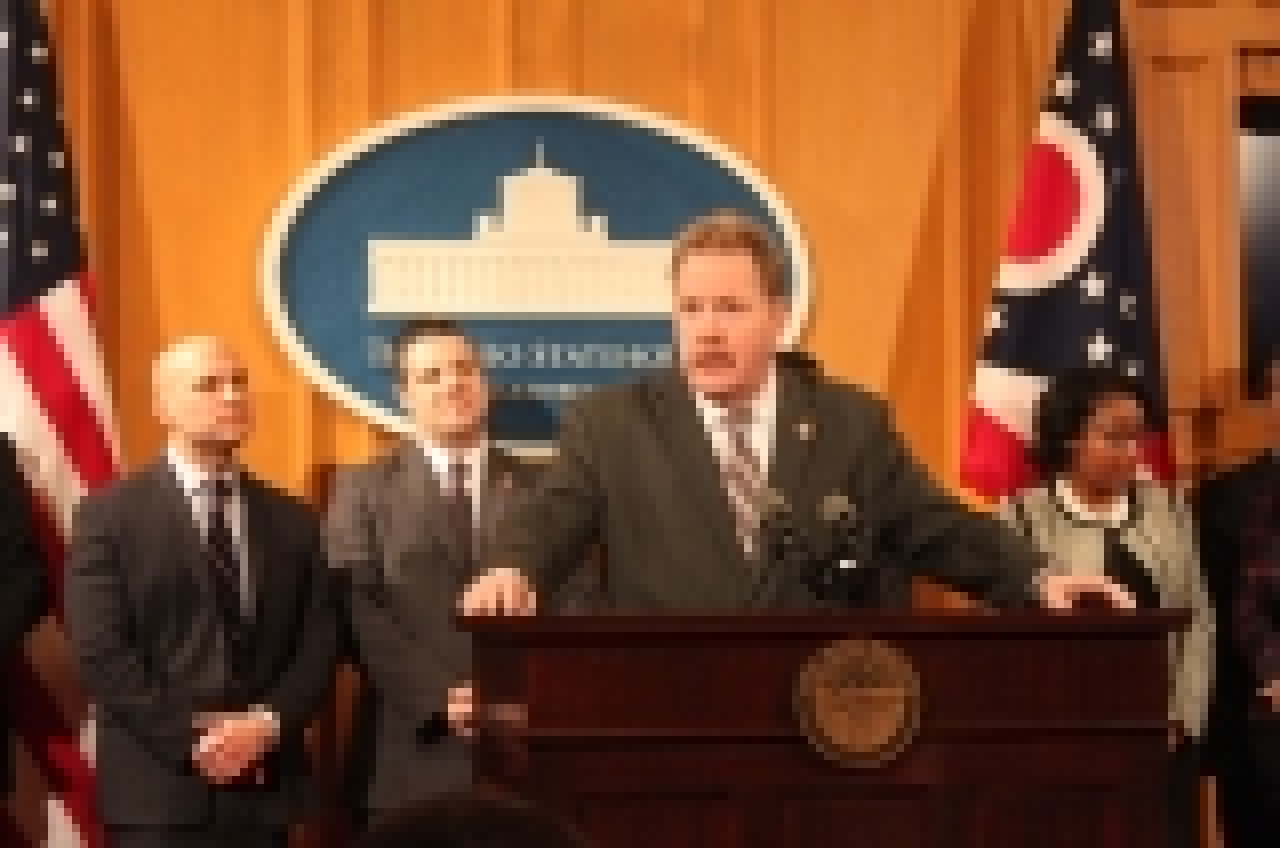Lawmakers focus on the future with "Restore Ohio" infrastructure initiative

State Reps. John Rogers (D-Mentor-on-the-Lake) and Denise Driehaus (D-Cincinnati) today introduced their “Restore Ohio” initiative, legislation to invest in Ohio’s communities and build reliable, efficient, and modern infrastructure systems that will fuel a strong and thriving economy.
According to the Report Card for America’s Infrastructure, published by the American Society of Engineers, over 2,200 of Ohio’s bridges are “structurally deficient,” while 361 high-hazard dams need repaired and 15 percent of the state’s public roads are in “poor condition.” In addition, the group also calculated that over $30 billion will be needed over the next 20 years to keep Ohio’s drinking water safe and address the safe disposal of wastewater.
House Bill 492, also known as “Restore Ohio,” would leverage $1 billion from the Budget Stabilization Fund (the Rainy Day Fund) to provide low-interest loans and grants to local governments to help restore the state’s crumbling infrastructure.
“‘Restore Ohio’ is a fiscally responsible approach to provide local communities with much needed relief from infrastructure deterioration by setting aside funding for critical community redevelopment projects,” said Rogers. “This program would immediately generate economic growth, while simultaneously addressing critical needs in communities across Ohio without requiring any new taxes or unnecessary spending.”
Through “Restore Ohio,” the state would incrementally leverage up to $1 billion dollars over a five year period from the Budget Stabilization Fund, making those dollars available to communities in the form of low or zero interest loans. Additionally, 50 percent of the investment earnings from the Budget Stabilization Fund would be made available to local communities in the form of infrastructure grants.
As loans are repaid, the Budget Stabilization fund would be replenished, ensuring the fund’s integrity and solvency. Any interest collected would also be utilized for future grants to communities.
“When goods and services can’t be delivered in a timely and efficient manner, or energy can’t reach its destination, and people can’t get to work on time, we all pay the price,” said Rep. Driehaus. “Our state’s infrastructure provides the foundation that creates good-paying jobs, generates revenue, grows the economy, and enhances our quality of life. I believe we must invest now – before it’s too late – in order to maintain and improve our infrastructure for future generations.”
With operational oversight by the state’s Public Works Program, the economic impact of this broad based investment in Ohio communities’ infrastructure should also see greater returns in the form of commercial activity, sales and income taxes combined with increased job growth.
House Bill 492 is a part of a broader economic agenda recently proposed by Democratic lawmakers. In January, Democratic leaders of the House and Senate announced their “Focus on The Future” agenda, an eight-bill package Democrats say will ensure economic stability for the next generation of working people in Ohio.




